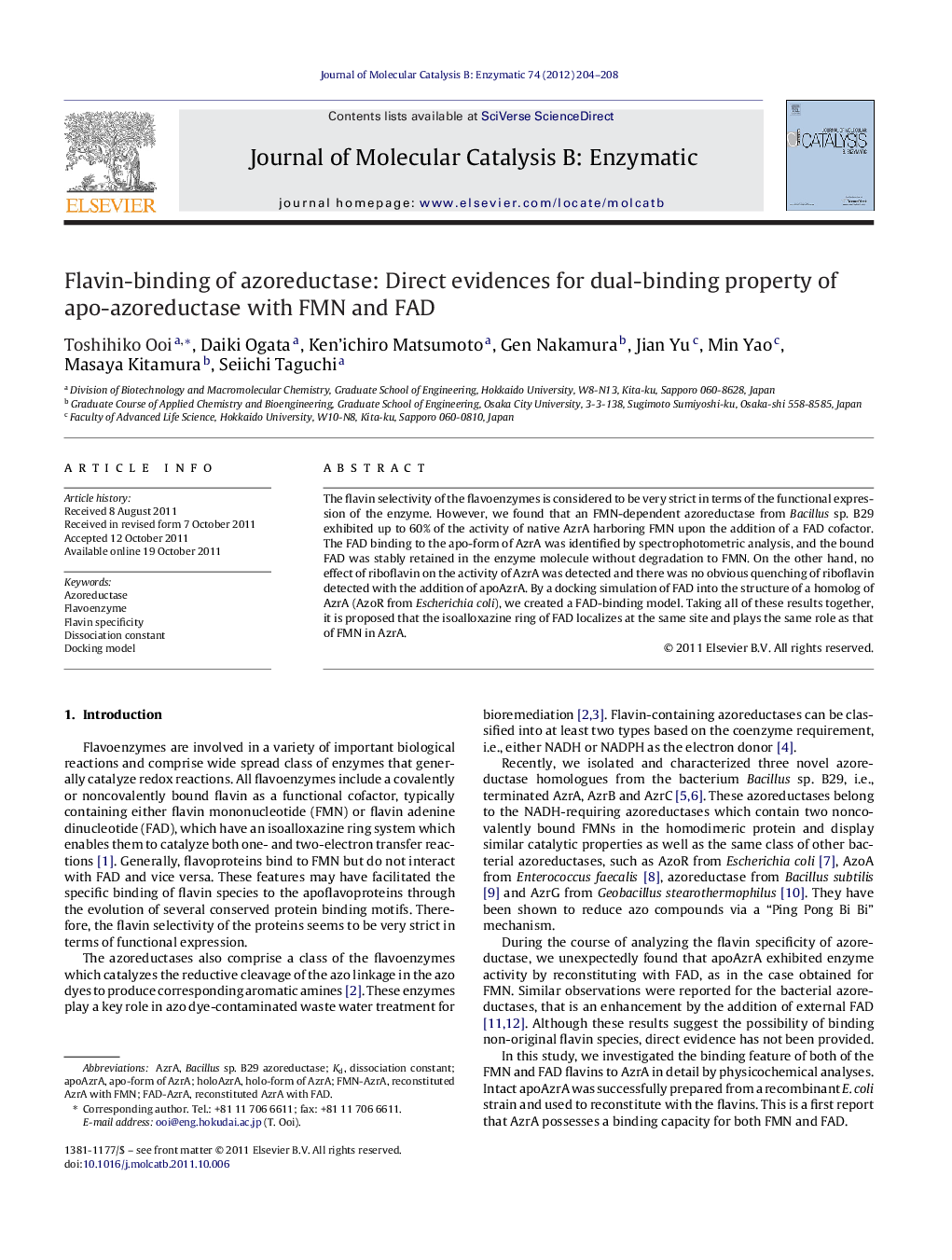| Article ID | Journal | Published Year | Pages | File Type |
|---|---|---|---|---|
| 70339 | Journal of Molecular Catalysis B: Enzymatic | 2012 | 5 Pages |
The flavin selectivity of the flavoenzymes is considered to be very strict in terms of the functional expression of the enzyme. However, we found that an FMN-dependent azoreductase from Bacillus sp. B29 exhibited up to 60% of the activity of native AzrA harboring FMN upon the addition of a FAD cofactor. The FAD binding to the apo-form of AzrA was identified by spectrophotometric analysis, and the bound FAD was stably retained in the enzyme molecule without degradation to FMN. On the other hand, no effect of riboflavin on the activity of AzrA was detected and there was no obvious quenching of riboflavin detected with the addition of apoAzrA. By a docking simulation of FAD into the structure of a homolog of AzrA (AzoR from Escherichia coli), we created a FAD-binding model. Taking all of these results together, it is proposed that the isoalloxazine ring of FAD localizes at the same site and plays the same role as that of FMN in AzrA.
Graphical abstractFigure optionsDownload full-size imageDownload as PowerPoint slideHighlights► Apo-form of FMN-dependent azoreductase, AzrA, was successively prepared. ► Apo AzrA could be accepted FAD as a functional cofactor instead of FMN. ► FAD binding to the azoreductase was verified by spectrophotometric analysis and fluorescence titration. ► The docking of FAD into AzoR and homology analysis of AzrA suggested binding manners of FAD in AzrA, which FMN moiety of FAD could be located at similar position to that of AzoR with two possible binding patterns of adenosine moiety.
